Read More >
- Anterior Ankle Impingement - July 24, 2022
- Tarsal Coalition - October 12, 2022
- Sural Nerve Pain - October 3, 2022
Cycling is a sport with a relatively low risk of injury when compared to high-impact sports like running. With cycling you are at risk of injury from 3 main issues: falling off your bike, having a poor set-up on your bike or overuse. Knee, back, neck, hand, and foot pain are all common with regular cycling and increasingly likely with longer ride duration.
Knee pain is the most common musculoskeletal injury related to cycling. The two most common causes of knee pain are either a poor bike fit or overuse, by increasing training too quickly. Knee pain is most likely to affect the front or outside of the knee, but can occur in any part of the knee. “Spring Knee” is knee pain from cycling commonly felt in the early season, caused by an increase in training with the better weather enticing you out on your bike more often.
Prevalence of Knee Pain Cycling
To put injuries into context a small study was done on 51 professional cyclists, over a 4 year period. During this time, a total of 103 separate injuries were experienced by 43 of the athletes. There was a near 50% split between traumatic and overuse injuries. Of the traumatic injuries, the most commonly fractured bone was the clavicle and of the overuse injuries, nearly 70% affected the leg (De Bernardo et al, 2012). Knee pain is reported across other studies at between 15-33% of all overuse injuries in cyclists (Rico Bini & Flores Bini, 2018). This paper also suggested a correlation between individuals who had knee overuse injuries or pain, with an inward movement of their knee and a change in the way the quadriceps muscle activated.
Anterior Knee Pain Cycling
The two most common injuries related to pain at the front of the knee from cycling are patellofemoral joint pain or patellar tendinopathy, often referred to as patellar tendonitis. Patellofemoral joint pain is the result of overload to the joint of the kneecap with the femur bone of the thigh. Patellar tendonitis or tendinopathy is a result of overload to the patellar tendon. Both can be aggravated by:
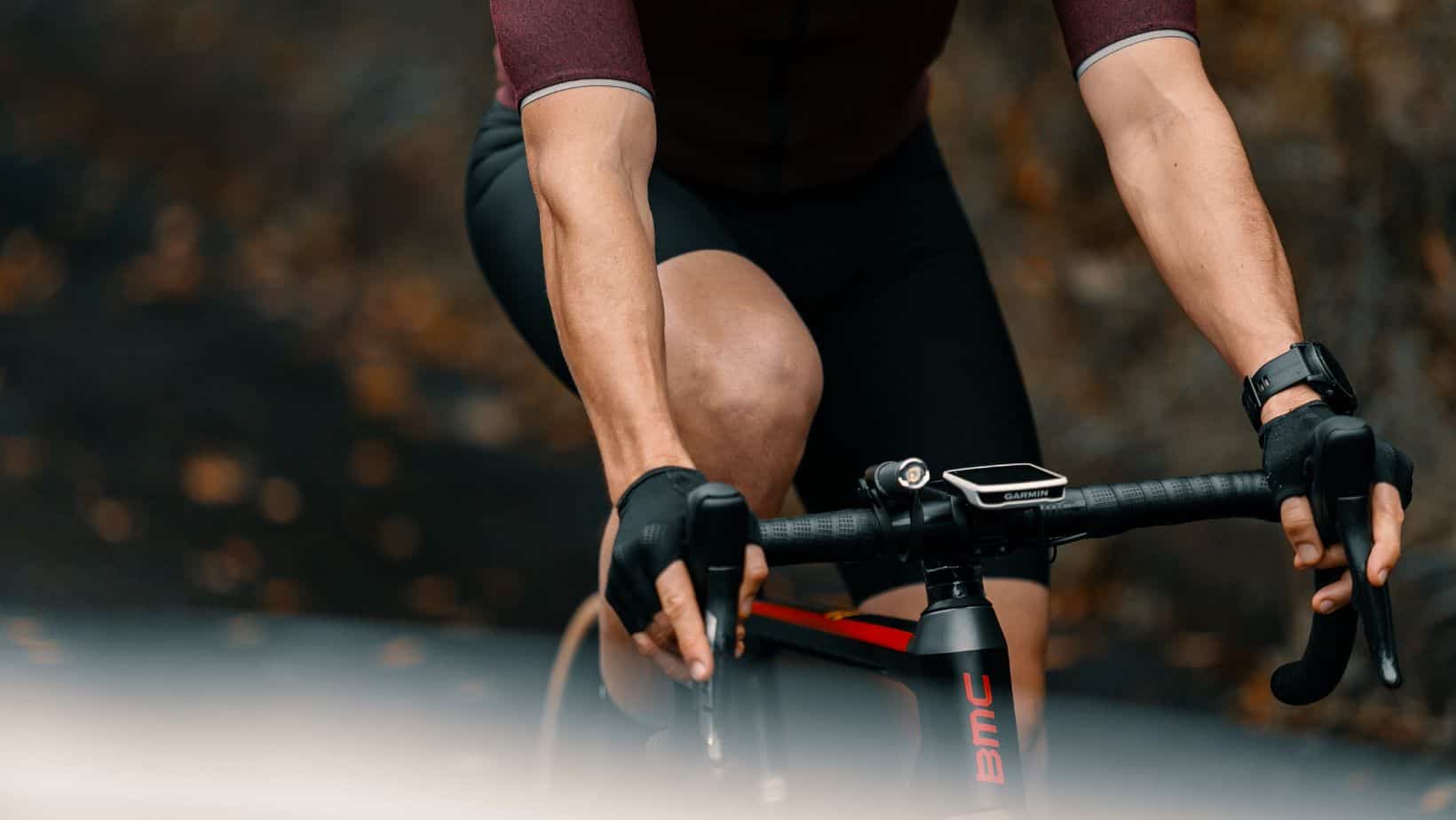
Person
– Tight lateral thigh muscles and iliotibial band
– Weak medial muscles such as the vasus medialis
– Inward movement of the knee with each revolution
– Increasing training too quickly
Bike
– Bike positions such as the saddle being too low or too far forward
– Using low gears so each revolution is high resistance
– Cleats that are tight so high force is needed to twist to unclip
Learn more about these conditions:
Patellofemoral Joint Pain Advice, Treatment, Stretches and Strengthening Exercises.
Patellar Tendonitis Treatment, Exercises, and Patellar Tendonitis in Sport.
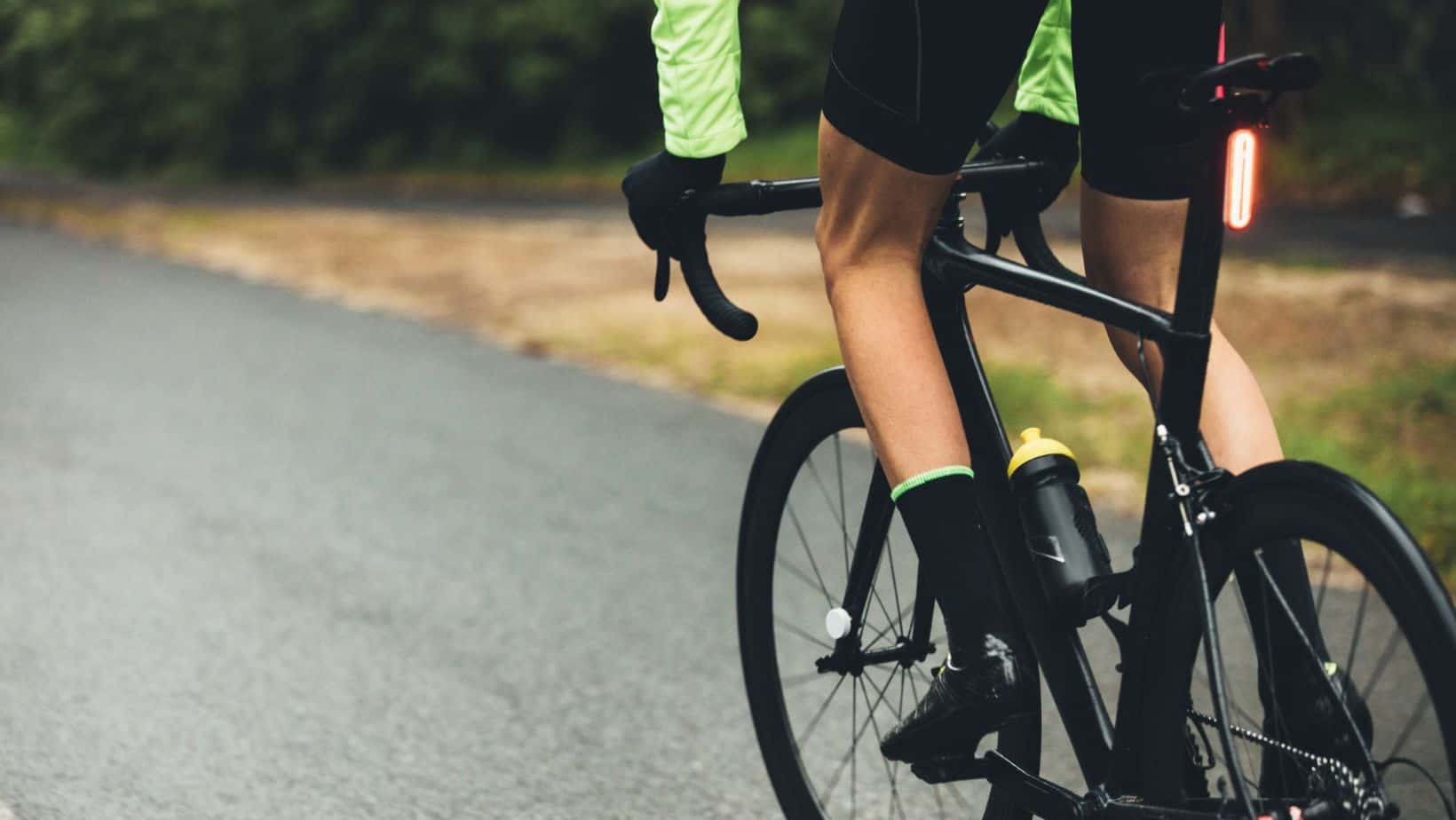
Posterior Knee Pain Cycling
The most common causes of posterior knee pain with cycling are hyperextension injuries, which can be an overload of the hamstring tendons at the back of the knee causing hamstring tendonitis, or a strain to the popliteus muscle. A baker’s cyst may also contribute to pain at the back of the knee, but may be caused by other activities and aggravated by cycling. A baker’s cyst is a stretch of the synovial membrane of the knee, and can cause a painful bulge of tissue and fluid at the back of the knee.
Person
– Tight or short hamstrings, calf or gluteal muscles
– Increasing high-resistance training such as hill work, too quickly
– Bakers cyst can develop if the individual has osteoarthritis of the knee
Bike
– Bike positions such as the saddle being too high or too far back, so the knee extends too far
– Cleats that are tight so high force is needed to twist to unclip
Learn more about these conditions:
Hamstring Tendonitis Treatment, Exercises, Taping and Braces and FAQs.
Baker’s Cyst Treatment, Braces and Wraps, Massage, and FAQs.
Lateral Knee Pain Cycling
The most common cause of lateral knee pain from cycling is issues related to the iliotibial band. The iliotibial band runs along the outside of the thigh, attaching at the top to the pelvis to a small muscle, the tensor fascia lata, and at the bottom to the outside of the calf and fibula bone. It has the most compression when the knee is bent through 20-30º and is therefore at risk of irritation with cycling. This can be aggravated by:
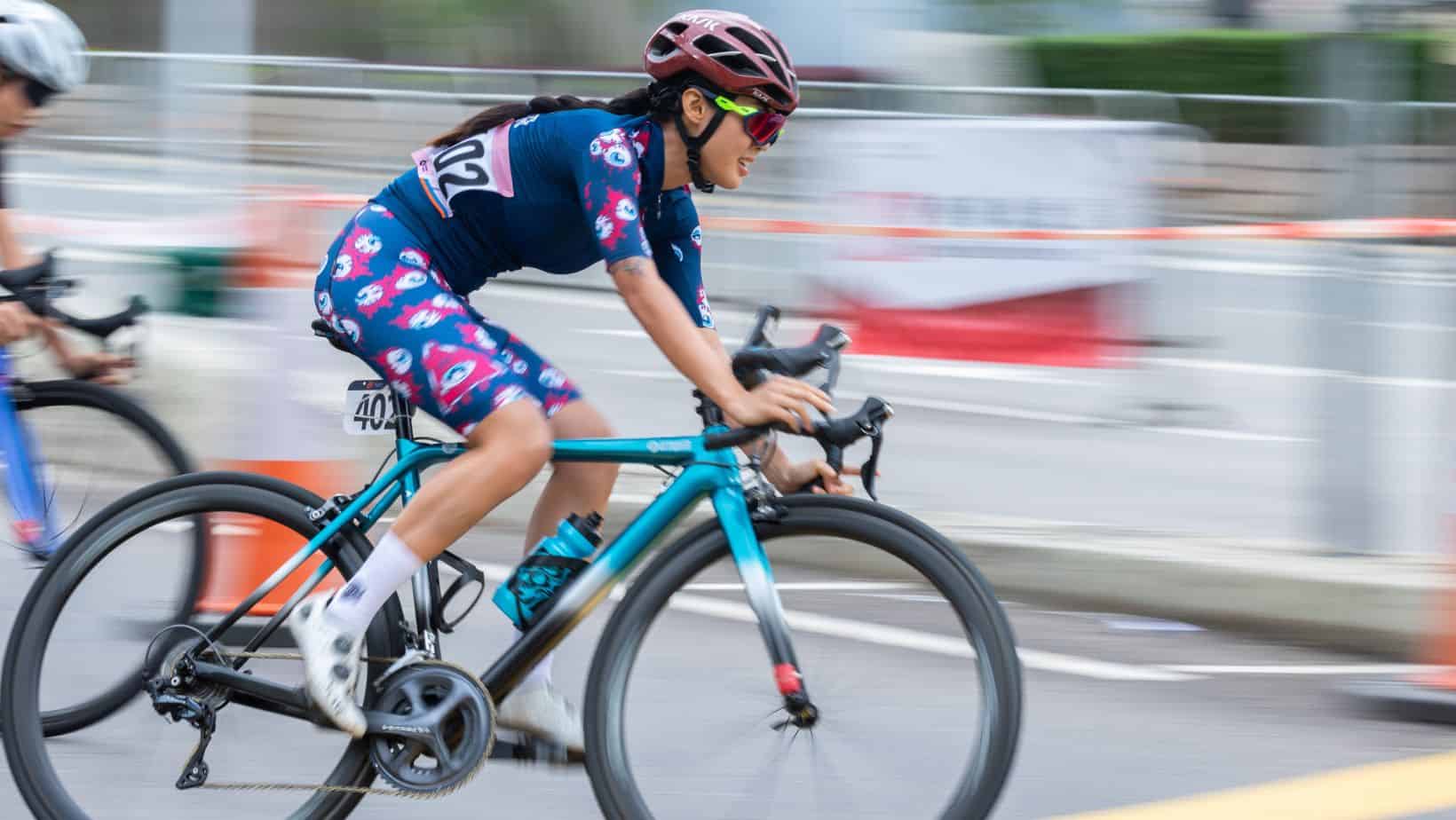
Person
– Tight lateral thigh, gluteal and tensor fascia lata muscles.
– Weakness of the gluteal muscles and cause an inward movement of the knee
– Increasing training too quickly
Bike
– Bike positions such as the saddle being low or too far forwards
– Cleat positions that are too narrow or turned the toes inwards
– Lack of support in shoes meaning the foot rolls inwards
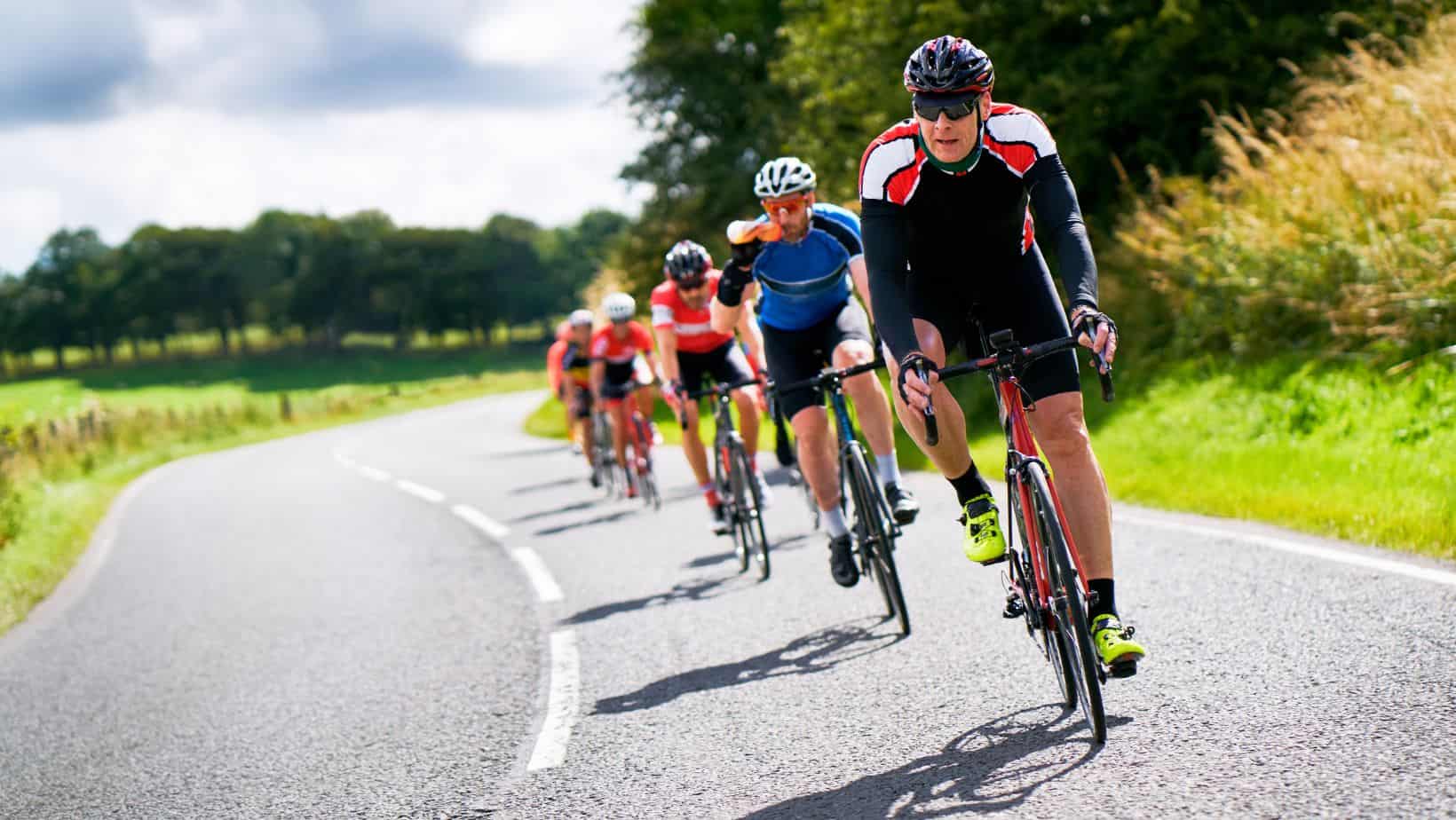
Medial Knee Pain Cycling
The most common cause of pain at the inside of the knee is overload or strain to the inside of the knee. This can cause injury and pain to the medial collateral ligament (MCL), the medial meniscus, the pes anserine tendons or bursa, or plica syndrome.
Person
– Weakness in the gluteal muscles or inner thigh muscles
– Tightness of the muscles of the inner thigh such as the adductors
– The knee moves inwards
Bike
– Bike positions such as the saddle being too low or too far forward
– Cleat position is too wide, or has too much float
– Cleats that are tight so high force is needed to twist to unclip
Learn more about these conditions:
MCL Treatments, Exercises, Braces and FAQs.
Meniscus Treatments, Exercises and FAQs.
Pes Anserine Treatments, Exercises and FAQs.
Plica Syndrome Treatments and FAQs.
Physiotherapy with James McCormack
This is not medical advice. We recommend a consultation with a medical professional such as James McCormack. He offers Online Physiotherapy Appointments for £45.
